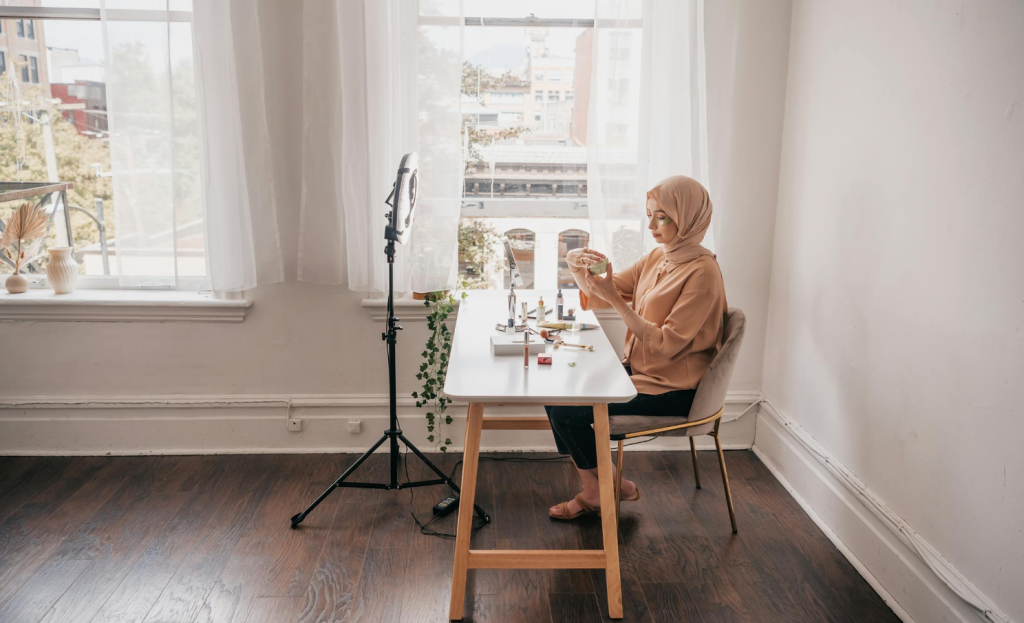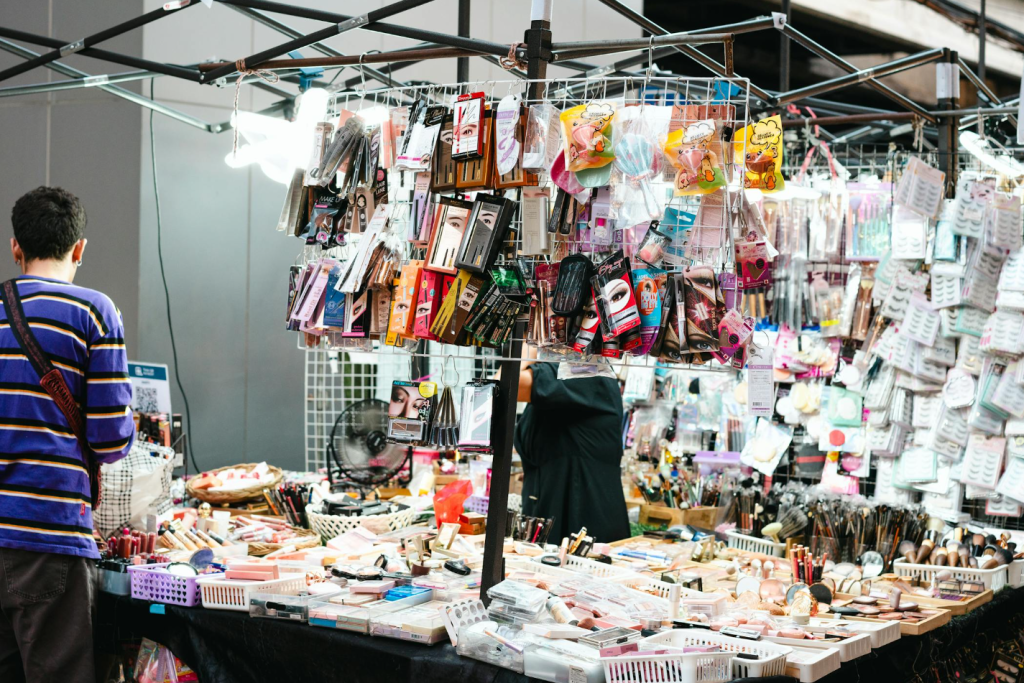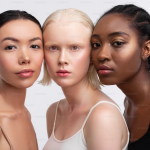Introduction – Affordable Beauty Without Compromise
Who says beauty has to cost a fortune? You don’t need high-end serums or celebrity-endorsed palettes to look and feel your best. With a few kitchen staples and smart hacks, you can create DIY skincare and makeup that actually work. Whether you’re saving money, reducing waste, or just having fun experimenting, beauty on a budget is all about smart simplicity.

Why DIY Beauty Works (and When It Doesn’t)
Cost-Effective and Customizable
DIY beauty gives you full control over what touches your skin. Instead of spending $50 on a face mask, you can whip up something equally effective for $5. Even better, you can adjust recipes for your skin type—extra honey for dry skin, less oil for oily complexions.
Knowing Your Ingredients
When you DIY, you skip the chemical jargon and questionable additives. You know exactly what’s inside: natural, transparent, and safe (if used correctly). It’s a win for your skin and your wallet.
When to Avoid DIY Treatments
Not every ingredient belongs on your face. Lemon juice, baking soda, and toothpaste—though popular online—can disrupt skin’s pH or cause irritation. Always research and patch test before slathering anything new.
Essential DIY Skincare Basics
Start With What You Have at Home
Your pantry and fridge are treasure troves for skincare. Think honey, yogurt, oatmeal, coconut oil, and green tea. These humble ingredients are packed with antioxidants, enzymes, and natural moisturizers.
The Importance of Patch Testing
Before trying a new DIY, apply a small amount behind your ear or on your wrist. Wait 24 hours. If no redness or itching appears, you’re good to go. Remember: natural doesn’t always mean harmless.
DIY Cleansers – Simple Yet Effective
Honey and Oat Cleanser for Sensitive Skin
Mix 1 tablespoon of raw honey with 1 tablespoon of finely ground oats. Apply to damp skin, gently massage, and rinse. Honey soothes and hydrates; oats calm inflammation. It’s gentle enough for daily use.
Green Tea and Aloe Cleanser for Oily Skin
Steep green tea, cool it, and mix with 2 tablespoons of aloe vera gel. This combination helps balance oil while delivering antioxidants—perfect for acne-prone skin.
DIY Exfoliation Hacks
Sugar and Olive Oil Scrub
Combine 1 tablespoon of brown sugar with 1 teaspoon of olive oil. Massage gently in circular motions. This exfoliates dead skin cells while leaving your skin silky smooth. Avoid using it on broken or irritated skin.
Coffee Grounds for a Glowing Boost
Use leftover coffee grounds with a dash of honey. The caffeine stimulates blood flow and reduces puffiness. Bonus: it smells amazing.
Natural Face Masks for Every Skin Type
Hydrating Mask: Avocado and Yogurt
Mash half an avocado and mix with 1 tablespoon of yogurt. The healthy fats and lactic acid hydrate and soften even the driest skin. Leave it on for 15 minutes for a dewy glow.
Brightening Mask: Turmeric and Honey
Mix 1 teaspoon of turmeric with 2 teaspoons of honey. Turmeric evens skin tone while honey adds moisture. Just don’t overdo the turmeric—unless you want a golden tint!
Acne-Fighting Mask: Clay and Tea Tree Oil
Combine bentonite clay with water and 2 drops of tea tree oil. Apply for 10 minutes. It draws out impurities, fights bacteria, and reduces inflammation.

DIY Toners and Mists
Rose Water and Witch Hazel Toner
Mix equal parts rose water and witch hazel. This simple toner refreshes, tightens pores, and balances oil production. Use after cleansing for a refreshing finish.
Cucumber Mist for Cooling Hydration
Blend half a cucumber with ½ cup of distilled water, strain, and pour into a spray bottle. Keep it in the fridge for a cooling facial mist that revives tired skin instantly.
DIY Moisturizers and Serums
Aloe Vera Gel + Vitamin E for Dry Skin
Blend 2 tablespoons of aloe vera gel with one capsule of vitamin E. This combo soothes dryness and supports skin healing. Store it in the fridge for a refreshing feel.
Jojoba Oil and Rosehip Blend for Anti-Aging
Mix equal parts jojoba and rosehip oils. Massage a few drops nightly. Both oils mimic the skin’s natural sebum, preventing fine lines and improving elasticity.
Makeup Hacks Using Household Items
DIY Lip Tint with Beetroot Powder
Mix beetroot powder with a few drops of coconut oil for a natural lip stain. It gives a soft flush of color that lasts all day and moisturizes at the same time.
Natural Highlighter with Coconut Oil and Mica
Blend a teaspoon of coconut oil with a pinch of cosmetic-grade mica powder. Apply on cheekbones or eyelids for a subtle, dewy glow—no expensive highlighter required.
Homemade Setting Spray with Green Tea
Steep green tea, let it cool, and pour into a spray bottle. Spritz over makeup for a refreshing, antioxidant-packed setting spray.
Budget Beauty Tools and Storage Ideas
Reuse Empty Jars for Organization
Before tossing empty skincare jars, clean and reuse them for your DIY creations. Label them with masking tape and a marker to keep things tidy.
Create a Mini DIY Beauty Station
Set up a small corner with ingredients, mixing bowls, and clean brushes. Having a “beauty lab” at home makes it easier—and more fun—to experiment.
Safety and Hygiene in DIY Beauty
Storage Tips and Shelf Life Awareness
DIY products don’t contain preservatives, so make small batches and store them in the fridge. Most should be used within one to two weeks.
Avoiding Contamination
Always wash your hands and tools before mixing. Use clean spoons—not your fingers—to scoop product. This keeps bacteria away from your skin.
Sustainability Meets Affordability
Reduce Waste with Reusable Containers
Use glass jars or metal tins instead of disposable plastic. It’s eco-friendly and looks chic on your vanity.
Eco-Friendly Ingredients That Save Money
Buy raw ingredients in bulk—like coconut oil, shea butter, and essential oils. They’re versatile, sustainable, and last for months.

When to Invest Instead of DIY
Skincare Actives that Require Precision
Retinol, chemical exfoliants, and vitamin C serums require careful formulation and stable pH. These are best bought from reputable brands rather than mixed at home.
Professional Treatments Worth Paying For
Sometimes, it’s worth investing in dermatologist treatments or a good sunscreen. Think of DIY as a supplement, not a replacement for clinical-grade care.

Conclusion – Beauty Doesn’t Have to Be Expensive
Luxury isn’t about brand names—it’s about how you feel in your own skin. With DIY skincare and makeup, you can create effective, affordable products that fit your needs perfectly. By understanding ingredients, following hygiene practices, and knowing when to splurge, you’ll enjoy glowing skin without draining your wallet. After all, beauty isn’t bought—it’s built.
FAQs
Q1: Are DIY skincare recipes safe for sensitive skin?
A: Most are, as long as you patch test first. Stick with gentle ingredients like oatmeal, honey, and aloe vera.
Q2: How long can I store homemade beauty products?
A: Generally, use within one to two weeks and refrigerate whenever possible. Avoid making large batches.
Q3: Can I replace commercial makeup with DIY options completely?
A: You can replace some, like lip tints or setting sprays, but foundation and mascara are best purchased for safety and stability.
Q4: What’s the best natural ingredient for glowing skin?
A: Honey tops the list—it’s hydrating, antibacterial, and gives a natural glow instantly.
Q5: How can I make my DIY skincare routine more effective?
A: Stay consistent, know your skin type, and avoid over-exfoliation. Sometimes less is more—especially when it comes to natural care.

